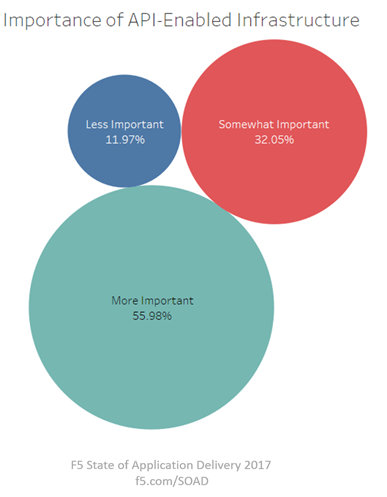(その他の) API エコノミーが企業に力を与える方法
API エコノミーについては多くのことが書かれています。 これは、人気のあるサービスがパブリック API を介してデジタル キモノを公開することで生じる波及効果です。 そうすることで、市場の消費者だけでなく企業の消費者にとっても生活を楽にするアプリ、Web サイト、その他のツールの開発が促進されます。

これは特に、データセンターの裏側、ネットワークにおいて当てはまります。 大手インフラベンダーが API を提供するというのは、ほとんどの人にとっては喜ばしいことではないかもしれませんが、「ネットワーク」の運用責任を持つ人にとっては、耳に心地よい音楽のようなものです。 この成長を続ける「その他の」API エコノミーが重要なのは、自動化とオーケストレーションがより高い敏捷性と成功の可能性をもって前進できるという理由だけではありません。 それは一つの利点ですが、唯一の利点ではありません。
インフラストラクチャ API は、組織がより自動化され、効率化されたデータ センターに向けて独自の道を選択する自由を与える手段です。 これらがなければ、組織はベンダーの気まぐれでソリューション間の既存の統合を提供するオプションの中から選択せざるを得なくなります。 かつてのネットワークでは、戦略的パートナーシップとは、ネットワーク管理システム、アプリ監視ツールセット、そして最終的には相互の統合を意味していました。 映画「ヘザース」が、インフラストラクチャとネットワーク ベンダーのパートナーシップの性質をよく表していた時代がありました。 もちろん、どのベンダーが互いにサポートし合うべきかについての顧客からの意見が求められ、考慮されましたが、どのベンダーをどのベンダーと統合するかを決定する方程式では、市場の動向も同様に重視されました。
API はその状況を変えます。 今日の API の性質上、インフラストラクチャが API 対応である限り、使用しているツールセット、フレームワーク、またはシステムとほぼ確実に統合できます。 HTTP REST および (通常は) ペイロードとしての JSON に関する事実上の業界標準化により、他の API エコノミーが劇的に拡大し、一般的に言えば、ほぼあらゆるものを自動化、オーケストレーション、統合できるようになりました。
それは単なる認識ではありません。 私たちは、アプリケーション配信の現状に関する調査で、世界中の多くの人々に、インフラストラクチャが API 対応であることがどれほど重要であるかについての意見を尋ねました。 圧倒的に、それは重要です。 2017 年の調査では、56% が「かなり重要」または「非常に重要」と回答し、32% が「ある程度重要」と回答しました。 わずか12%が肩をすくめて、自分にとってそれほど重要ではないと答えました。 2016 年に同じ質問をしたところ、API 対応のインフラストラクチャがより重要または非常に重要であると回答したのはわずか 31% でした。 そうでないと答えた人は今年のほぼ2倍となり、2016年にはインフラストラクチャ上のAPIはそれほど重要ではないと答えた人は23%でした。
これは驚くべき方向転換であり、現代の環境における運用の拡張に対する戦略的ではないにしても戦術的対応として DevOps の重要性が高まっていることを示しています。 2017 年にはかなりの割合の組織がプライベート クラウドへの投資を計画しているため、他の API エコノミーに対するこのような姿勢は驚くべきことではありません。 真に自動化されオーケストレーションされたクラウドのような環境を実装するために必要なインフラストラクチャとネットワーク サービスの抽象化には、すべてが API 対応であることが必要です。 API 対応インフラストラクチャに対する見方の変化の原動力ではなかったとしても、最も基本的なネットワーク サービス (ファイアウォール、負荷分散、DNS) を必要とするアプリの増加により、データセンターがそれらのサービスを提供するデバイスをプロビジョニング、拡張、管理する方法の変更が求められています。 それは自動化とオーケストレーションを意味します。 なぜなら、問題解決に人員を増やしても、実際には運用効率やスループットは向上しないからです。 一方、自動化とオーケストレーションではそれが実現します。
もう 1 つの API エコノミーは、組織に世界クラスのアーキテクチャを自由に組み合わせて構築する権限を与え、成長中の企業が自動化とオーケストレーションを通じて効率的に運用を拡大できるようにするという点で、非常に重要です。
組織が顧客とのやり取りやサービス提供の方法に関してデジタル変革を進めていることは強調しておきたいところですが、データセンターでも同様のことが起こっており、従来の運用が API、テンプレート、アルゴリズムによってデジタル変革されています。
ビバ・ラ・API。
